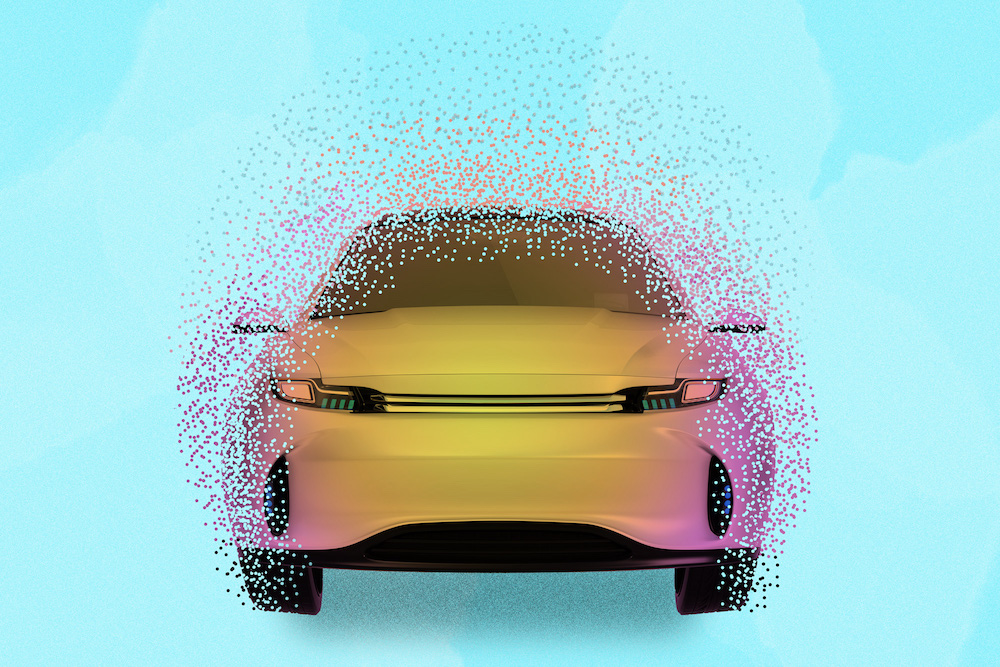
Credits: Christine Daniloff, MIT.
The power needed to run the computers onboard a global fleet of fully autonomous vehicles in the future could generate as many greenhouse gas emissions as all the data centers in the world today, a new study finds.
To help keep these computing-related emissions in check if autonomous vehicles are widely adopted, hardware efficiency will need to advance rapidly, researchers said.
Data centers currently consume about 1 percent of the world’s electricity and account for about 0.3 percent of global greenhouse gas emissions. That is about as much carbon as Argentina produces annually, according to the International Energy Agency.
Self-driving vehicles are expected to require a significant amount of computing for levels 4 and 5 autonomy, where a human backup driver is unnecessary. Given these demands, scientists at MIT developed a statistical model to calculate the potential carbon footprints of fully autonomous vehicles, based on estimates of the number of vehicles in the global fleet, the power of each computer on each vehicle, the hours driven by each vehicle, and the carbon intensity of the electricity powering each computer.
One challenge of this research involved uncertainties regarding future autonomous vehicle behavior. For instance, some research suggests that the amount of time these vehicles spend driving might increase because people can multitask while driving and the young and the elderly could drive more. But other research suggests that the time spent driving might decrease because algorithms could find optimal routes that get people to their destinations faster.
Another challenge the researchers faced involved modeling advanced computer hardware and software that does not exist yet. To overcome this problem, they simulated the workload of a multitask deep neural network, a popular algorithm for autonomous vehicle that can perform many tasks at once. They explored how much energy this deep neural network would consume if it were processing many high-resolution inputs from many cameras with high frame rates, simultaneously.
The scientists found that a global fleet of fully autonomous vehicles would require a great deal of processing power. For example, if one autonomous vehicle has 10 deep neural networks processing images from 10 cameras, and that vehicle drives for one hour a day, it will make 21.6 million inferences each day. One billion vehicles would make 21.6 quadrillion inferences (1 quadrillion is 1,000 trillion). To put that into perspective, all of Facebook’s data centers worldwide make a few trillion inferences each day.
“These vehicles could actually be using a ton of computer power,” study co-senior author Sertac Karaman, an associate professor of aeronautics and astronautics and director of the Laboratory for Information and Decision Systems at MIT, said in a statement. “They have a 360-degree view of the world, so while we have two eyes, they may have 20 eyes, looking all over the place and trying to understand all the things that are happening at the same time.”
All in all, the researchers estimated that 1 billion fully autonomous vehicles, each driving for one hour per day with a computer consuming 840 watts, would consume enough energy to generate about the same amount of emissions as data centers currently do.
“If we just keep the business-as-usual trends in decarbonization and the current rate of hardware efficiency improvements, it doesn’t seem like it is going to be enough to constrain the emissions from computing onboard autonomous vehicles. This has the potential to become an enormous problem,” study lead author Soumya Sudhakar, a graduate student in aeronautics and astronautics at MIT, said in a statement. “But if we get ahead of it, we could design more efficient autonomous vehicles that have a smaller carbon footprint from the start.”
In more than 90 percent of modeled scenarios, to keep autonomous vehicle emissions from zooming past current data center emissions, the researchers found that each vehicle must use less than 1.2 kilowatts of power for computing. For that to be possible, in one scenario — where 95 percent of the global fleet of vehicles is autonomous in 2050, computational workloads double every three years, and the world continues to decarbonize at the current rate — they found that computing hardware would have to become more efficient at a significantly faster pace, doubling in efficiency about every 1.1 years.
One way to boost autonomous vehicle efficiency would be to use tailor-made hardware designed to run specific driving algorithms. Since researchers already know the navigation and perception tasks that autonomous driving requires, it may prove relatively easy to design specialized hardware for those tasks. However, vehicles tend to have 10- or 20-year lifespans, so one challenge in developing specialized hardware would be to future-proof it so it can run new algorithms, the scientists noted.
Another solution is to make the driving algorithms more efficient so they would need less computing power. However, one concern there is that this may trade off some accuracy for more efficiency, potentially hampering vehicle safety.
All in all, the researchers hope that in the future, “people will think of emissions and carbon efficiency as important metrics to consider in their designs,” study co-senior author Vivienne Sze, an associate professor in the department of electrical engineering and computer science and a member of the Research Laboratory of Electronics at MIT, said in a statement. “The energy consumption of an autonomous vehicle is really critical, not just for extending the battery life, but also for sustainability.” The scientists detailed their findings in the January-February 2023 issue of the journal IEEE Micro.

